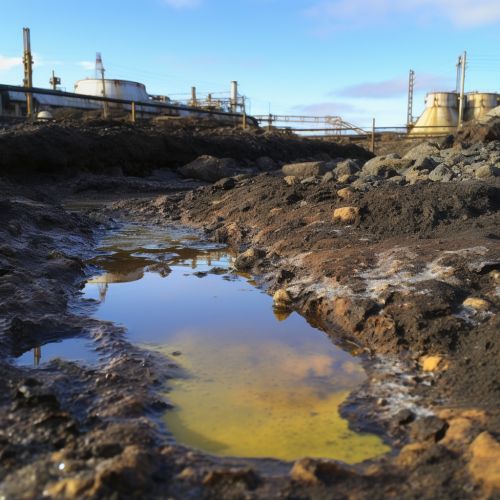Groundwater Contamination and Remediation
Introduction
Groundwater contamination refers to the presence of pollutants in the underground water that is stored in aquifers. These pollutants, often a result of human activities, can pose serious health and environmental risks. Remediation, on the other hand, involves the process of removing, reducing, or neutralizing these pollutants to restore the quality of the groundwater to acceptable standards.
Sources of Groundwater Contamination
Groundwater contamination can occur from various sources, both natural and anthropogenic.
Natural Sources
Natural sources of groundwater contamination include minerals and gases that can leach into the water from the surrounding soil and rock. For example, arsenic and radon are naturally occurring elements that can contaminate groundwater.
Anthropogenic Sources
Anthropogenic, or human-induced, sources of contamination are often the result of industrial, agricultural, and residential activities. These include:
- Industrial wastes: Many industries produce waste products that can contaminate groundwater if not properly managed. This includes chemicals, heavy metals, and radioactive materials.
- Agricultural chemicals: The use of pesticides and fertilizers in agriculture can lead to groundwater contamination when these chemicals seep into the ground.
- Septic tanks: Inadequately designed or maintained septic systems can leak, allowing bacteria, viruses, and other pathogens to contaminate groundwater.
- Landfill leachate: Landfills can produce a liquid waste, or leachate, that contains various contaminants. If a landfill is not properly lined and monitored, this leachate can contaminate groundwater.


Impacts of Groundwater Contamination
The impacts of groundwater contamination can be far-reaching, affecting both human health and the environment.
Human Health Impacts
Contaminated groundwater can pose serious health risks when it is used for drinking, cooking, or bathing. These risks depend on the type and concentration of the contaminants present. For example, exposure to high levels of arsenic in drinking water can lead to skin damage, problems with the circulatory system, and an increased risk of cancer.
Environmental Impacts
Groundwater contamination can also have significant environmental impacts. It can harm wildlife and aquatic ecosystems, particularly in areas where groundwater discharges to surface water bodies like rivers or lakes. Contaminants can also accumulate in the food chain, posing risks to animals and humans who consume contaminated organisms.
Groundwater Remediation Techniques
There are various techniques for remediating contaminated groundwater, ranging from physical methods to biological and chemical treatments. The choice of technique depends on the type and concentration of the contaminants, as well as the characteristics of the aquifer.
Pump and Treat
Pump and treat is a common method for groundwater remediation. It involves pumping contaminated water out of the ground, treating it to remove contaminants, and then either discharging it to a surface water body or re-injecting it into the ground.
In Situ Treatment
In situ treatment involves treating the contaminated groundwater directly within the aquifer. This can be done using various methods, such as injecting chemicals or bacteria that can degrade the contaminants, or using electrical currents to mobilize and remove contaminants.
Permeable Reactive Barriers
Permeable reactive barriers (PRBs) are a type of in situ treatment that involves installing a reactive material in the path of a contaminant plume. As the contaminated groundwater flows through the barrier, the contaminants react with the material and are removed from the water.
Challenges and Future Directions
Despite advances in groundwater remediation techniques, there remain significant challenges in dealing with groundwater contamination. These include the difficulty of treating complex mixtures of contaminants, the high costs associated with remediation, and the need for long-term monitoring to ensure the effectiveness of remediation efforts.
Future directions in groundwater remediation research and practice may include the development of more efficient and cost-effective treatment technologies, the use of predictive modeling to guide remediation efforts, and increased emphasis on prevention and risk management to reduce the incidence of groundwater contamination.
